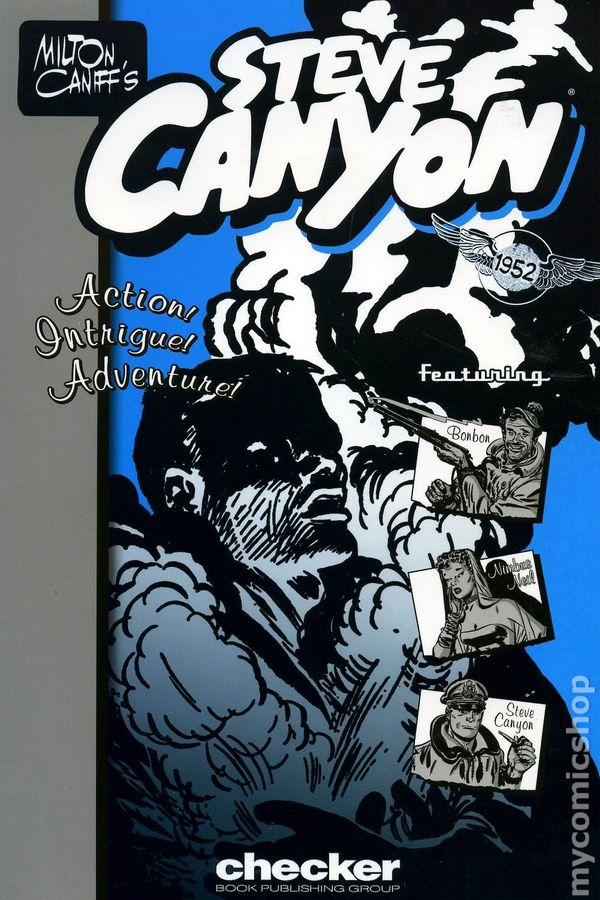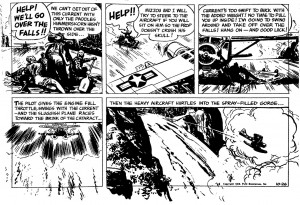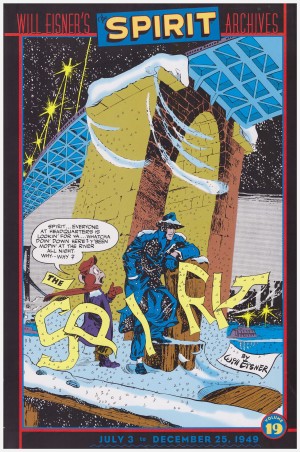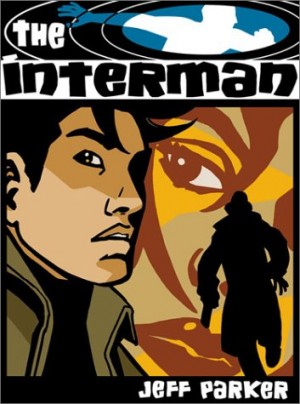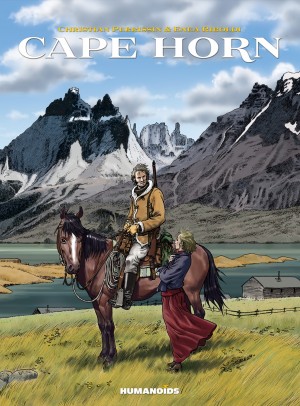Review by Woodrow Phoenix
The book design for this series of Milton Caniff’s Steve Canyon reprints from Checker reaches a new low with the truly hideous cover on this volume. You would not think it possible to make a bad choice of imagery by randomly selecting pieces from artwork by Caniff, but the designers of this series achieve the impossible every time. The unsympathetic type, weirdly placed, makes an already bad job even worse. Possibly the only thing in their favour is that by giving each volume a different terrible colour you can tell at a glance if you have it already. Steve Canyon 1952 collects strips from April 9, 1952 to May 14 1953.
‘Operation Stray’ finds Steve still brooding on his near-marriage to Summer Olsen. While he hunts for a valuable cargo, lost at sea, a possible way to fix things comes along, but in ‘Deep Woods’, a real shaggy-dog of an episode, events contrive to keep him away from Summer and mixed up in a manhunt.
The third story, ‘Indian Cape’, focuses on a small town and the effect a nearby air force base has on the townspeople. Caniff increases the romantic comedy and mix-ups to a somewhat tiring degree. He almost redeems the wackiness with a finale that brings all the subplots to a boil in one big soup of terror, but it’s a stretch and, for once, barely plausible. While this volume has the superbly drawn action scenes, dramatic escapes, explosions and near-death reversals that Caniff does so brilliantly, the stories are less original and there is a sense of déjà-vu to the ideas here which feel more formulaic than before.
Something to note about Caniff’s Steve Canyon is the gender mix. Many of the adversaries Canyon faces are women. Even if those women in lead roles mostly turn into romantic foils for him, the sheer number of other women required as colourful supporting characters for misunderstandings and intrigues mean that they are a mixture of ages and types. They have important jobs to give them a reason to be involved in the action, and they talk to each other without men around quite a lot. So despite its dated attitudes, a 1950s adventure strip finds the Bechdel test to be a very low bar which it hurdles by miles; far more easily than 95% of comparable ‘mainstream’ comics being produced now, seventy years later. That is something today’s comics companies should be ashamed of.
At a convenient size and with a year’s worth of strips in each volume these collections offer excellent value for money, but the format does have an effect on your appreciation of Caniff’s formidable artwork. The Sunday strips are mostly split over two pages rather than being shown in a single page as they would have originally appeared. They don’t suffer too badly from being split up or shown without colour, but they do lose a lot visually in being shrunken to fit the small pages of these Checker collections, as Caniff made more dramatic pictures on Sundays than he could usually achieve in the single tier of a daily strip.
IDW is currently reprinting Steve Canyon in a bigger, hardback format with two years of the strip per volume. These are more expensive but much better designed books. The drawings are bigger and given more breathing room, the Sunday pages are reproduced larger and in colour. If you’re interested in seeing Caniff’s art as it deserves to be seen, you should have a look at this series.
